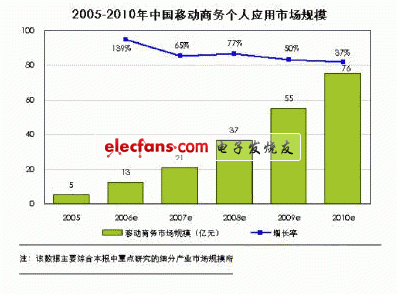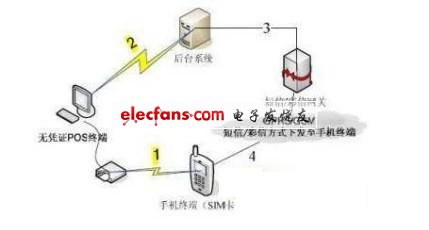A POS design and application for mobile payment
POS (parTITIon operaTIon system), in the traditional embedded real-time operating system, the kernel and the application are running at the same privilege level, and the application can access the entire system address space without restrictions. Therefore, in some cases, the potentially dangerous actions of the application will affect the normal operation of other applications and the kernel, or even cause the system to crash or malfunction. In order to meet the requirements of avionics for high reliability, high availability and high serviceability, ARINC released ARINC653 (avionics application software standard interface) in January 1997, and ARINC653 Supplement 1 in July 2003. Interval communication and health monitoring were supplemented with instructions to standardize the development of avionics equipment and systems. With the development of mobile e-commerce, mobile phone consumption has become the mainstream payment method for people's current consumption. Subsequently, POS machines have been widely used, but in view of the safety of mobile phone consumption, users have to wait for printing after consumption. Credentials, user signatures and other series of operations. In response to this shortcoming, a new type of POS machine was designed in this paper, which was optimized on the basis of the current POS machine process, making full use of the convenience and security of the current advanced mobile network . It simplifies the user consumption process, greatly reduces the user's queuing waiting time, and at the same time can save paper resources, greatly optimizing the user experience. 1 Introduction In recent years, the global mobile payment market has shown rapid development. Global mobile payment revenue has doubled since 2004, from US $ 5.5 billion in 2002 to nearly US $ 20 billion in 2005, with an average annual growth rate of more than 100%. More than 30 countries and regions have launched Mobile payment business, and East Asia is regarded as the fastest growing region in global mobile payment. South Korea and Japan are currently the world's leading mobile payment development countries. From the perspective of transaction scale, according to the forecast of research and consulting company BWCS, it is expected that by 2010, the global market size of mobile on-site payments only (excluding virtual payments) will reach US $ 380 billion. China's mobile e-commerce has also been greatly developed in recent years. The specific data is shown in the following figure: Figure 1 Credit card POS terminal swiping process With the rapid development of mobile e-commerce, the use of POS machines has spread throughout domestic large and small supermarkets, hotels, etc. The sales terminal-POS (point of sale) is a multi-functional terminal, which is installed in the special merchants of credit cards It can realize the automatic transfer of electronic funds by connecting with the computer in the acceptance network and the computer. It has the functions of supporting consumption, pre-authorization, balance inquiry and transfer, etc. It is safe, fast and reliable to use. pos is the abbreviation of Packet over SONET / SDH, which is a technology that directly transmits IP data packets using the high-speed transmission channel provided by SONET / SDH. POS technology supports fiber optic media. It is a high-speed, advanced WAN connection technology. Insert a POS module on the router, the router can provide POS interface. The link layer protocols used by POS mainly include PPP and HDLC. POS can provide interfaces of 155Mbps, 622Mbps, 2.5Gbps and 10Gbps transmission rate, and the maximum transmission rate reaches 10Gbps. The configuration parameters of POS interface are interface bandwidth, interface address, interface Link layer protocol, frame format of the interface, CRC check and flag of the interface (flag of static load type in the frame), etc. When configuring the POS interface, it should be noted that some parameters must be consistent with the parameters of the peer interface, such as the link layer protocol, frame format, CRC check, and flag of the interface. 2. The design method of traditional POS equipment The types of POS machines currently on the market can be summarized as follows: It can be seen from the above table that there are many kinds of POS terminals on the market at present, but no matter which of the above POS terminals, the functions they implement are the same, so that the card swiping process is the same. 2.1 Traditional POS card swiping process The functional module diagram of the traditional wireless POS is shown below [2]: Figure 2 Traditional wireless POS function module diagram The traditional wireless POS structure is as follows [3]: Figure 3 Traditional wireless POS structure Traditional wireless POS transaction process [3]: (1) Wireless POS collects user data. (2) The wireless POS sends a GPRS access request in the wireless environment, and sends data to the GPRS network when the line is clear. (3) The data is sent to the mobile information server via the GPRS network, and the application server of the mobile company is aggregated through the operator's data network. (4) After data processing, the application server sends the data to the bank's firewall through a dedicated line. (5) After data packet security check and IP address conversion, the data is sent to the bank POS server. (6) After the data is processed by the intermediate business platform and the bank account host, it is returned to the POS server. (7) The POS server feeds the information back to the mobile company's application server. (8) The application server of the mobile company returns the response data to the corresponding mobile information server. (9) Wireless POS prints transaction vouchers. (10) The user signs and confirms. 2.2 Disadvantages of the traditional POS card swipe process For the traditional POS card swiping process, the POS machine (such as a bank card POS machine) that requires user confirmation not only greatly increases the waiting time in line, but also wastes a lot of paper resources. POS equipment that does not require user confirmation (such as a bus card swipe) does not give the user certain voucher guarantee. Users have no good consumer experience. 3 New POS equipment design method In view of the shortcomings of traditional POS card swiping, we can improve the existing process, and at the same time, we can ensure the timeliness of credential sending and the confidentiality of key information consumed by users. 3.1 Credit card process We can improve the POS card swipe process as follows: Figure 4 Cardless POS terminal card swiping process Flow Description: Step 1: The mobile terminal swipes the card at the POS terminal without paper vouchers (the card can be swiped through 13.56M, 2.4G, etc.), and the user can leave after the POS terminal shows that the swiping is successful. No need to wait for receipt printing. Step 2: The POS terminal saves the user's card swiping information locally, and at the same time sends the user's card swiping information to the background system via GPRS network. Step 3: The background system processes the user's card swiping information to generate the credential information, and then sends the credential information to the SMS / MMS gateway (this credential information can be an encrypted SMS or MMS message, or a QR code or other verifiable form). Step 4: The SMS / MMS gateway sends this credential information to the user's mobile phone terminal, so that the user can backup the credential for this card swiping operation. As can be seen from the above process, based on this new type of POS machine, the functional modules used are no different from traditional POS machines. In other words, no improvement is needed for the POS machines that are currently deployed. Traditional POS machines can still be used. Compared with the background, all information processing is processed by the background system connected to the mobile network, and then sent to the user's mobile phone through the mobile gateway. In this way, the business can be carried out and promoted only by improving the functions of the system. Achieve the purpose of the smallest changes, the fastest implementation. 3.2 Advantages of this new POS machine This method can provide users with paperless POS vouchers, can save a lot of paper, and has environmental protection functions; This method removes the link of printing the voucher on the POS terminal printer, reduces the waiting time for the user to swipe the card, and makes the user experience better. This method solves the problem of sending and receiving credit card credentials in other use cases without credentials (such as public transportation); This method encrypts the user's card swiping credential and sends it to the user's mobile phone via MMS, SMS, or QR code, so that the credential can be identified, authenticated, and forged; This method can still provide a card swiping credential to the user on a credentialless POS terminal, that is, a backup of the card swiping operation is also provided to the user, which also facilitates the user to perform a card swiping operation inquiry. 4. Summary Through the improvement of the existing POS machine process, it can not only ensure the timeliness of credential sending and the confidentiality of key information consumed by users. It can also allow users to swipe card records on POS machines without POS credentials. It is convenient for users to consult and increases the user's experience. Poe Power Adapter,Rf Poe Riser Adapter,Firewire To Hdmi Ethernet Adapter,Cctv Poe Power Adapter Ninghai Yingjiao Electrical Co., Ltd. , https://www.yingjiaoadapter.com



